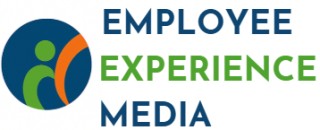
Understanding the Role of HR Document Management
The Importance of Efficient HR Document Management
In today's fast-paced business environment, the role of human resources has evolved beyond traditional functions, with a growing emphasis on improving the employee experience. Central to this endeavor is effective HR document management, which plays a pivotal role in optimizing various HR processes. Implementing a robust management system not only ensures the security and compliance but also significantly enhances the overall employee satisfaction.
HR document management encompasses the strategic handling of numerous employee files ranging from performance reviews to critical compliance documents. The goal is to create a seamless system that allows for easy access and efficient document storage. In essence, it's about managing these repositories with best practices that cater to both business needs and regulatory requirements.
Many organizations are now leveraging document management software to streamline processes and improve efficiency. These tools facilitate quick and secure access to employee records, reducing time and data errors associated with manual handling of files. For the best business outcomes, investing in a comprehensive, cloud based solution can provide scalable and accessible file management.
The benefits of deploying top-notch document software extend beyond internal comfort. When data is managed effectively, it also reinforces the organization's compliance posture, ensuring that all necessary documents are accurate, up-to-date, and easily retrievable for audits.
To learn more about enhancing employee experience through the implementation of efficient HR document management software, visit this insightful guide.
Streamlining Onboarding Processes
Optimizing Onboarding Efficiency
In today's rapidly evolving business environment, an effective onboarding process is paramount. Streamlining this critical phase can significantly impact an employee's long-term satisfaction and productivity. HR document management plays a vital role in ensuring a seamless onboarding experience. Transitioning to a digital system decreases the reliance on physical files, enabling human resources professionals to efficiently organize, manage, and access necessary documents. This shift not only reduces the time and effort spent on managing paper but also enhances the accessibility of key resources like employee files and compliance records. Utilizing cloud-based document storage offers the best benefits, providing both employees and HR teams with instantaneous access to necessary documents. This could include everything from employee records to compliance documents, performance reviews, and training materials. By implementing robust management software, businesses ensure that all relevant onboarding data is easy for new employees to access and comprehend. Document management software offers numerous features that optimize efficiency, such as automated workflows and secure file access. It allows employees to complete onboarding tasks at their own pace, thereby enhancing their initial experience with the company. It becomes essential for businesses to adopt a compliant, effective, and engaging management system that not only enhances productivity but also aligns with best practices in the industry. To explore more about how innovative tools like leave management can further streamline processes, visit our post on enhancing workplace efficiency with leave management tools.Improving Accessibility and Transparency
Boosting Accessibility and Transparency for a Seamless Experience
In today's digitally-driven work environment, accessibility and transparency are integral to enhancing the overall employee experience. Human resource teams have recognized the value of making employee documents easily accessible, ensuring that vital information is available whenever and wherever it's needed. The best document management systems incorporate cloud-based solutions, providing instant access to employee files while maintaining stringent compliance and security measures. This means employees can retrieve their employee records and performance reviews efficiently without having to navigate cumbersome processes. The convenience of accessing documents on-demand not only saves time but also empowers employees by providing them with up-to-date information. Moreover, modern management software often features user-friendly interfaces that simplify employee interaction with the document management systems. Implementing these tools allows businesses to present clear, transparent data that meets the needs of both employees and management. Creating a more transparent system fosters trust and boosts morale, as employees can witness first-hand the efforts taken to make their professional lives more efficient. Transitioning from traditional paper-based systems to digital platforms is a crucial step towards achieving this goal, ultimately leading to improved employee satisfaction and productivity. To learn more about improving workplace dynamics through collaboration, you might find the article on enhancing team dynamics through collaborative teaming insightful. In summary, choosing the right digital system to access documents efficiently is not just about technology adoption—it's about aligning with best practices that benefit both the organization and the employees, setting a foundation for a supportive and transparent workplace culture.Enhancing Compliance and Security
Securing Sensitive Information and Promoting Compliance
In the realm of employee experience, safeguarding sensitive employee files and records is paramount. A robust document management strategy plays a crucial role in ensuring compliance with various legal and regulatory requirements. Effective file management systems provide businesses with the tools necessary to maintain data integrity and protect employee files from unauthorized access. To enhance compliance and security, organizations can employ top document management software that offers advanced features such as access controls and encryption. These tools help protect employee documents and ensure that only authorized personnel can access sensitive information. Additionally, cloud-based platforms offer the benefits of secure document storage, reducing the risk associated with physical files and enhancing overall document security. Consistency is key in maintaining compliant employee records. Document locator software aids in accurately tracking and storing important employee documents, including performance reviews and human resource management files. This approach not only ensures compliance but also streamlines the processes, allowing human resources teams more time to focus on employee engagement and other core functions. Best practices within a management system should include regular audits and updates to document retention policies. This proactive approach allows organizations to stay ahead of regulatory changes and reduce the risk of non-compliance. Moreover, investing in compliance-focused document software helps mitigate potential penalties and enhances the overall employee experience by fostering trust and transparency. Ultimately, by integrating effective compliance measures into their document management strategy, businesses can offer a secure environment that upholds the privacy and trust of their employees, contributing to a healthier workplace culture and a more satisfied workforce.Facilitating Employee Self-Service
Empowering Employees with Self-Service Tools
Empowering employees to have more control over their own information and processes leads to greater satisfaction and efficiency. By implementing a robust management system, organizations can significantly enhance the document experience for their workforce. Modern management software offers employees the ability to quickly and easily access documents relevant to their roles, such as performance reviews, human resource policies, or personal employee files. This not only saves time for employees but also reduces the workload on HR personnel. With cloud-based document storage solutions, employees can access documents anytime, anywhere, thereby improving overall productivity. Moreover, offering digital tools that allow employees to update their personal information directly into the management system can streamline data accuracy and ensure compliance with regulations. Employee document management systems provide features that allow for seamless document locator capabilities, ensuring every employee can find what they need without unnecessary delays. This level of accessibility and self-service fosters an environment of transparency and trust, as employees feel empowered to manage their own information. It's a best practice for businesses aiming to enhance employee satisfaction and engagement by giving them the best tools to manage their own employee records effectively. When businesses invest in top-notch document management features, they can vastly improve the workplace experience. In modern workplaces, such empowerment not only boosts employee morale but also aligns with strategic business goals, ensuring the organization remains compliant while fostering a culture of transparency and autonomy.Measuring the Impact on Employee Satisfaction
Assessing the Outcomes of Enhanced Document Management
Knowing how to measure the impact of HR document management on employee satisfaction is crucial for organizations striving to improve their internal processes. Efficient management of employee documents not only enhances access and transparency but also provides numerous benefits that contribute to a positive employee experience.
Here’s how effective document management systems, integrated with appropriate document software tools, play a pivotal role in enhancing employee satisfaction:
- Time Efficiency: Streamlined onboarding processes and easy access to important files directly impact an employee's productivity. Time saved in handling bureaucracy translates to increased focus on key responsibilities and career development.
- Enhanced Accessibility: Providing employees with digital access to their records and necessary files, through cloud based or on-premises document storage systems, builds a transparent environment where information is readily available, which fosters trust.
- Compliance and Security Assurance: A management system that ensures data compliance and secures employee records minimizes the risk of breaches, thereby instilling confidence among employees about the safety of their personal information.
- Support for Self-Service: By facilitating access to self-service features, employees can manage their own data and documents, enhancing their autonomy and satisfaction. This empowerment can lead to increased engagement and morale within the workplace.
- Performance Optimization: With the best practices in document management software, performance reviews can be efficiently managed, making the feedback process more effective and motivating ongoing professional development.
In conclusion, the successful implementation of employee-centric document management processes leads to a more satisfied, efficient, and engaged workforce. By recognizing the value of efficient document management, companies can align their objectives with employee needs, paving the way for a thriving organizational culture.











